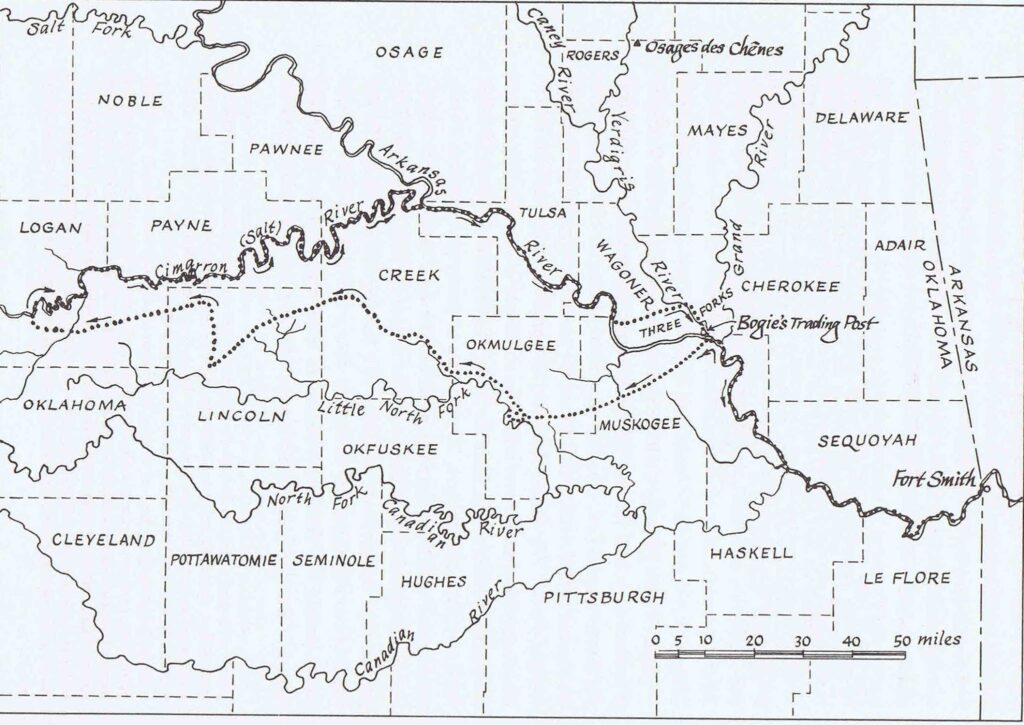
A few bits to whet your appetite from the journal, as Nuttall is traveling into present-day Oklahoma, up the Arkansas River from Fort Smith: “About breakfast time, we passed the mouth of the rivulet or brook, called by the French Salaiseau, from some hunters having here killed a quantity of bison, and salted the beef for traffic…Here, for the first time, near the Arkansa, we meet with the hazel (Corylus americana) and the American raspberry (Rubus occidentalis).”
“Above the confluence of this stream [the Canadian River], the Arkansa, where deep, appears clear, green, and limpid.”
“About four miles above the Canadian [River], we passed the river Illinois, on the right, a considerable stream of clear water, as are all the other rivers flowing into the Arkansa from the north.”
“This afternoon, two of the hunters went out and brought in the most part of the meat of a fat bison, whose track they had followed from the bar.”
“The variety of trees which commonly form the North American forest, here begin very sensibly to diminish.”
“We again passed three or four difficult rapids…presently after saw the outlet of the Grand river, (or the Six Bulls as it is called by the French hunters), and now entered the Verdigris, where M. Bougie and Mr. Prior had their trading houses.”
“Contiguous to the lower side of the Grand river, there was a thick cane-brake, more than two miles in width, backed by the prairie.”(pp. 187-191, in Lottingville’s edition)
“To-day I proceeded with two young men in a canoe up Grand river, with an intention of visiting the salt works…” [July] “18TH.] The morning was fine, and we embarked at sunrise…we passed a bend called the Eagle’s nest, a mile above which…a fascade of calcareous rock appears…While examining these cliffs, I recognized as new, a large shrub, and to my great surprise found it to be a simple-leaved Rhus, scarcely distinct from the R. Cotinus of the south of Europe and of our gardens.” [This was the American smoke tree, named by Nuttall (in 1849) as Cotinus americanus Nutt., but today recognized as Cotinus obovatus Raf. (1840)–Lottinville]….The neighboring thickets abounded with game, amongst which two bears made their appearance. The gravel bars were almost covered with Amsonia salicifolia…[Amsonia Tabernaemontana var. salicifolia (Pursh) Woodson, willow-leaved amsonia].”(p. 200-201, in Lottingville’s edition).
